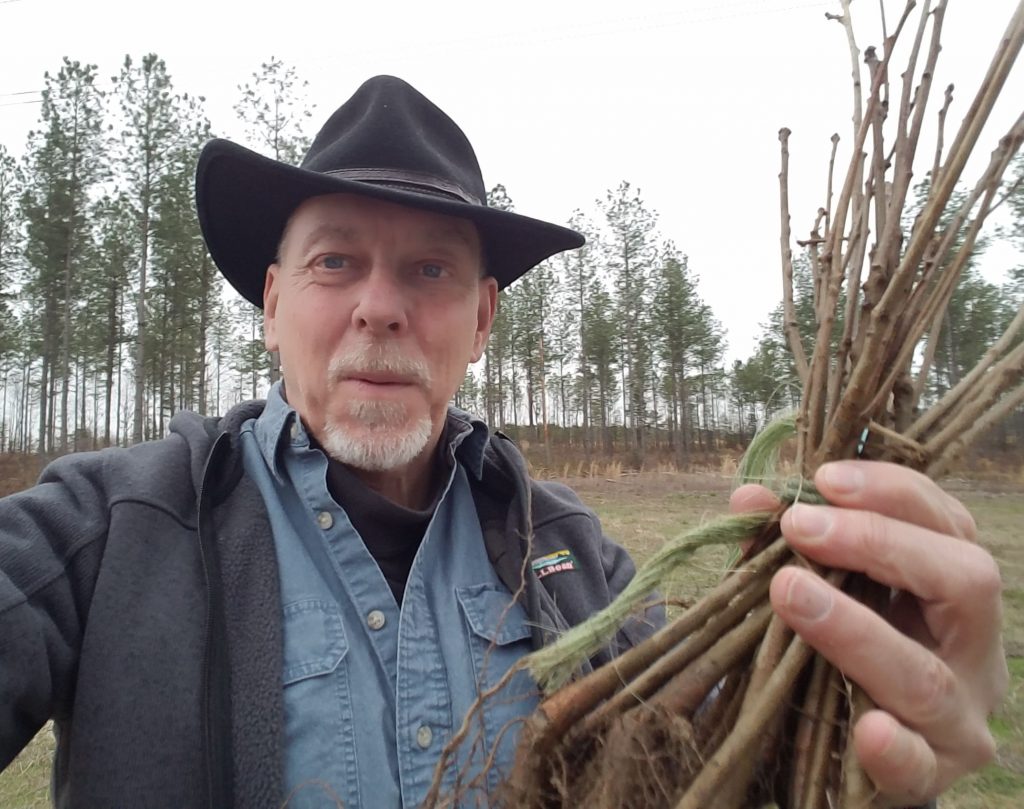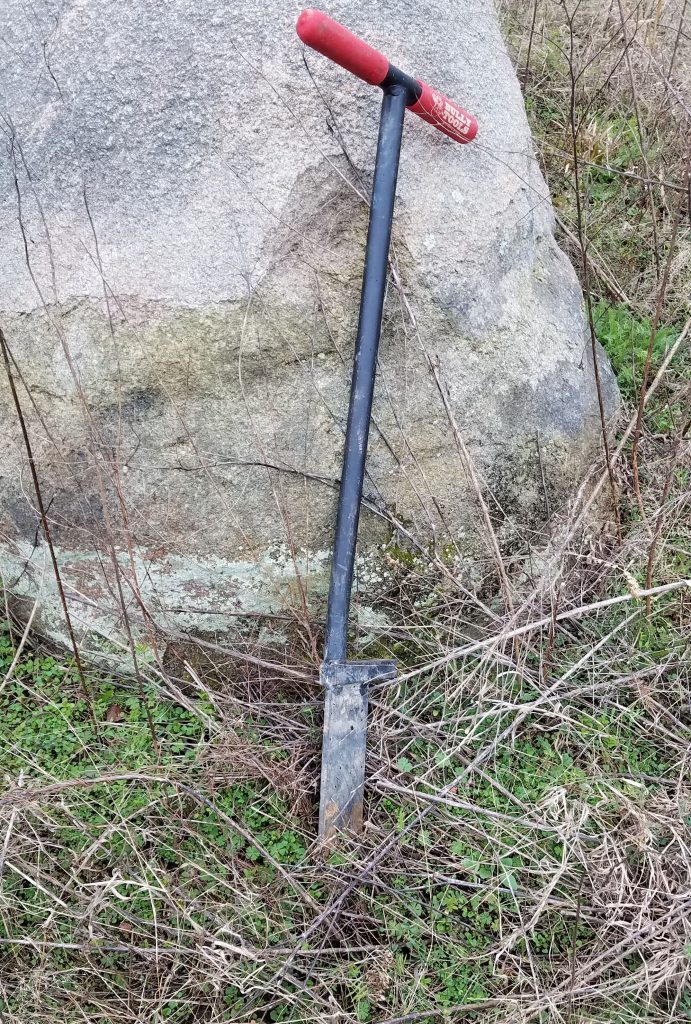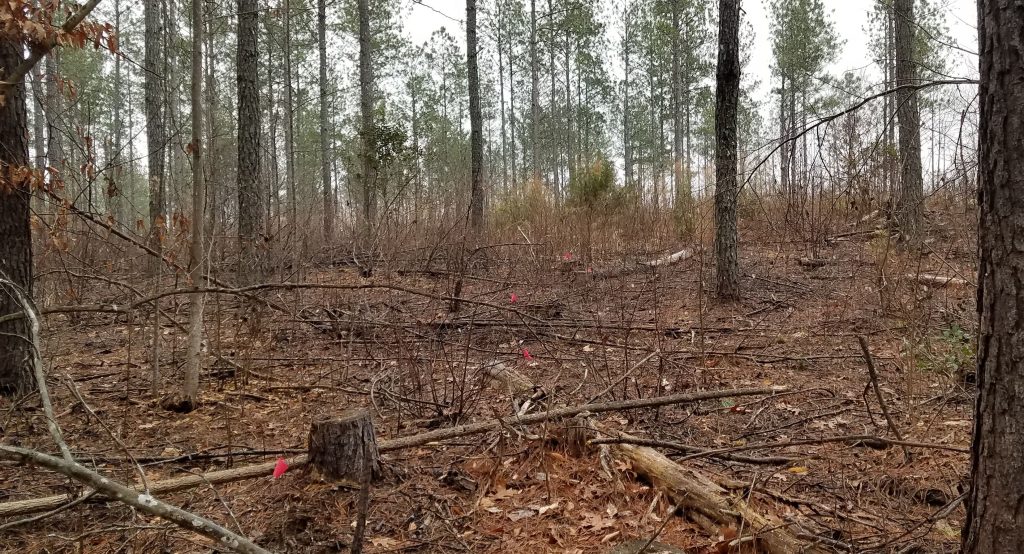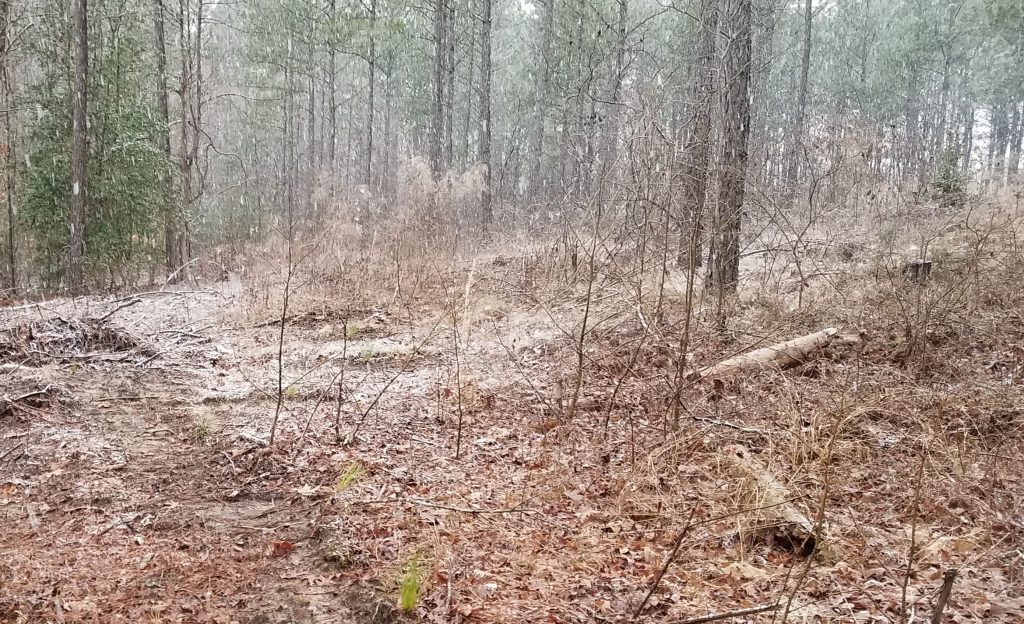Snow. The weather man said that the moisture came all the way from the Sea of Cortez, like a river in the atmosphere and then some sort of kink in the jet stream. I did not understand exactly what they meant, but I think it is really interesting if my snow is from Sea of Cortez water.
We don’t get that much snow in Virginia, but it snowed today on my forests. The ground was still soft but the snow made my planting a different experience. the snow fell in big flakes and it made a pleasant sound as it fell through the trees. But it was also wet and chilly. As a Wisconsin native, I should be adapted to cold, but I was not dressed warmly enough.
I got 300 shortleaf, 50 white oak and 50 swamp white oak. They are all bare root, so I have to use my different tool, seen in the picture. I didn’t get much done. It was not teh snow; it was the rock. I had planned to plant in a rocky area. Unfortunately, it was too rocky. There were few places I could sink the dibble stick, but I had to pound on the ground with it to find them. I ended up planting only 50 oaks before I knocked off early because of the snow.
Anyway, I was tired. I drove about 6 hours to get here, since I had to go to Augusta to pick up the trees and then drive down to the farms. It was not a hard drive but just driving that far is draining.
Pictures show the conditions. The Russians have a word for the season before winter freezes the ground and then before spring dries it out. They call it “rasputitsa.” Dirt roads at that time are impassible. It really was rasputitsa and not the famous Russian winter that defeated the Nazis. They got mired in the mud. Virginia is luckier. We just have a couple days like that, not whole seasons.
My first picture is me and the bare root trees. Next is the bare root dibble stick, followed by my muddy road. Last two pictures show snowing in my woods. It is very light and will melt off by tomorrow. Good, I have more work to do.
— Still a few more trees to plant. I am getting 300 shortleaf pine, 50 white oak and 50 swamp white oak on Tuesday.
Gee, I got rocks
I picked out a good place for the oaks, a rocky place I found when trying to plant longleaf. I finally gave up when I determined that I could not get the density I needed, since I could not find enough places in rows where I could sink the dibble stick.
I think it will work wonderfully for the oaks. They will be planted irregularly, in the places I can dig. I think it will be aesthetically pleasing. The rocks will limit competition and mitigate the fires I will need to set. Oaks can survive fire and even thrive, but they are not as fire resistant as longleaf.
Oak pine savanna
I visited an oak-pitch pine savanna in Pennsylvania. It was rocky with shallow soils. I think I can make something like that but with the shortleaf and the few longleaf I managed before I gave up. Another pattern may be those oak openings near Baraboo, Wisconsin, a landscape I also love. Of course, I figure it will be a long time coming and – to use my concept – I will be compost before the trees are mature.
The site is a gentle slope facing northwest and leading into the stream management zone.
The Rodney Dangerfield of southern pines
Shortleaf pine usually grow mixed in hardwood forests, and so do not behave like other southern pine. This also makes them less obvious. Even though they are the most geographically widespread southern pine, they do not enjoy the following of the iconic longleaf or the wonderfully productive loblolly. They get no respect, and have been declining. We can bring back a few.






